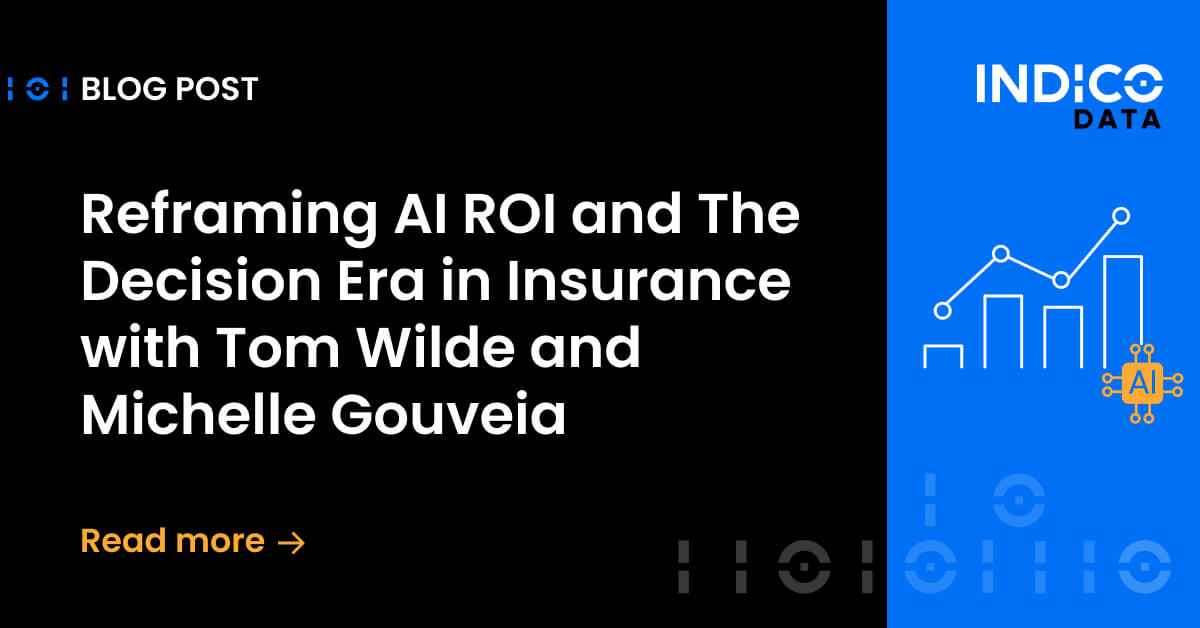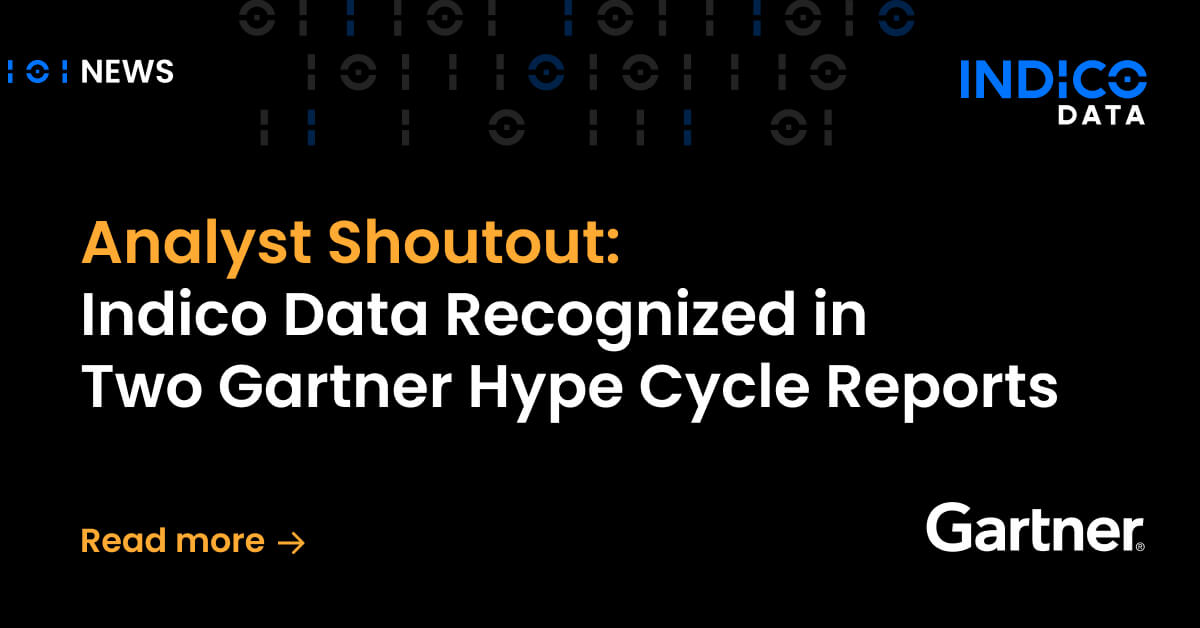Accurate data and advanced technology are transforming every industry—but perhaps none so profoundly as insurance. By adopting artificial intelligence (AI) and automation, insurers can now improve underwriting workflows, enhance risk evaluation, and make more precise pricing decisions. These innovations not only increase profitability but also help carriers compete in today’s fast-paced environment.
We recently hosted the webinar, “Better Data, Better Decisions: How AI and Automation Are Reshaping Risk and Pricing,” featuring industry-leading professionals who shared insights into this transformation. Panelists Tom Wilde (CEO, Indico Data), Bryan O’Neal (Sales Engineering Lead, Coherent), and Alice Boreman (Partner, EY Actuarial Transformation Practice) explained how AI and automation are revolutionizing insurance operations. If you missed the session, don’t worry! Here’s a recap of the most important takeaways.
Listen to the Unstructured Unlocked Podcast here: Unstructured Unlocked Podcast
Why now is the time to modernize risk assessment and pricing
Technology and market dynamics have converged to create a “why now” moment for insurers to transform underwriting and pricing.
“There’s never been more urgency to modernize these processes,” said Alice Boreman, partner at EY. With growing regulatory pressures and a softening market, carriers are under increasing pressure to adapt. Boreman noted, “Insurance has always been a data business. But we’re finally at a point where technology allows actuaries and underwriters to build tools that meet their needs without complex, large-scale projects.”
Bryan O’Neal from Coherent echoed this urgency, emphasizing the increasing demand from actuaries for granular, high-quality data to build more accurate models. “The days of relying on giant spreadsheets and outdated workflows need to end,” he stated.
Meanwhile, Tom Wilde, CEO of Indico Data, described this era as a pivotal transition point. “On one hand, we’re seeing the benefits of cloud, data, and AI converge to enable better decision-making. On the other hand, carriers must act quickly to adapt to softening markets and grow profitability.”
Challenges insurers face in underwriting and pricing
The panel outlined five common challenges that need to be addressed for effective transformation:
Data quality and integration issues
Underwriters often contend with fragmented, inconsistent, and outdated data sources. A recent survey revealed that 97% of insurers use data that doesn’t meet their internal quality standards.
This problem was summed up by Boreman, who highlighted that while data and models are readily available, accessing them through multiple systems slows down the quoting process. She emphasized, “We need more modern systems that not only organize data but also feed it directly into decision-making tools to create a seamless workflow.”
Wilde added that adopting a supply chain approach to data is key. “Think of risk assessment as a data supply chain,” he explained. “Start by standardizing data ingestion and ensuring high fidelity at every stage. From there, work backward to focus on what data is needed for effective decision-making.”
Reliance on outdated and manual processes
Forty percent of underwriters’ time is spent on repetitive manual tasks like data entry, according to the webinar. This not only reduces productivity but also delays risk pricing and claim assessment.
Coherent’s Bryan O’Neal explained, “Manual processes create inefficiencies and bottlenecks. It’s not just about lost time but also about missing high-value opportunities.” He provided an example of how tools like Coherent streamline workflows by converting spreadsheets into APIs, eliminating re-keying errors, and cutting manual effort significantly.
Related Content: How AI-powered underwriting automation improves decision speed and accuracy
Evolving risk landscape
Emerging risks such as climate change, cyber threats, and social inflation are challenging traditional pricing and underwriting models.
“Today’s risks are increasingly complex and unpredictable,” Boreman noted. She emphasized that staying competitive requires new strategies for integrating diverse data sources, from climate models to court case filings. “Underwriters need tools that can account for these multi-layered risks and provide actionable insights at scale.”
Wilde highlighted the potential for insurers to rely increasingly on external data. “Over time, underwriting might shift from being internally driven to externally informed. Insurers must figure out how to aggregate, standardize, and synthesize data from diverse sources to stay ahead.”
Regulatory pressures
Insurers face regulatory hurdles as they look to innovate risk and pricing models. Nearly half of attendees cited regulation as a significant barrier during the webinar survey.
“When implementing AI, you need to account for regulatory oversight by building transparency into every decision-making process,” said Wilde. He outlined a need for detailed audit trails that track the data, prompts, and decisions made by AI tools to ensure regulatory compliance.
Boreman added, “Capturing data in a flexible way is critical. Since we can’t predict future reporting requirements, staying adaptable can prevent significant shortfalls.”
Talent shortages and analytical expertise
Modernizing risk and pricing isn’t just about adopting technology; it’s also about building the right teams. Recruiting advanced analytics talent remains a significant barrier for 40% of insurers.
“Companies must rethink the makeup of their pricing teams,” Boreman remarked. She discussed the importance of embedding developers and actuaries with technical skills, such as Python, in underwriting teams to ensure technology and business functions integrate seamlessly.
O’Neal shared how supporting innovation within teams can build a forward-thinking culture. “Companies that empower their employees to experiment with new tools will unlock breakthroughs that drive greater operational efficiency.”
Related Content: Harnessing AI for better data: The key to competitive advantage, a conversation with Peter Mansfield
How AI and automation are reshaping the future
The webinar highlighted how modern technologies are key to addressing these challenges. AI and automation create opportunities to enhance operational efficiency, improve data accuracy, and empower collaboration between humans and machines.
Practical AI applications in risk and pricing
- Dynamic data prioritization: AI systems can rank insurance submissions based on risk scores, ensuring underwriters focus on high-value cases.
- Advanced data extraction: Platforms like Indico Data use NLP to transform unstructured documents into structured datasets at speed and scale.
- Seamless integrations: Tools such as Coherent streamline workflows by converting complex rating spreadsheets into APIs, making pricing more efficient and transparent.
A hybrid approach to decision-making
AI complements rather than replaces human expertise. Automating routine tasks allows underwriters and actuaries to focus on complex decisions that require strategic judgment.
“Automation shouldn’t aim to ‘boil the ocean’ by handling every step of the process,” Wilde stated. “Instead, it should target high-impact areas that deliver measurable efficiency gains.”
Building a roadmap to transformation
The webinar proposed actionable steps to accelerate the adoption of AI and automation in underwriting and pricing models.
- Identify inefficiencies in workflows, such as manual data entry or delays in quoting.
- Start small by automating a critical but manageable segment of the workload.
- Foster cross-functional collaboration among actuaries, underwriters, and IT teams.
- Ensure transparent governance to meet regulatory standards for AI applications.
- Continuously update pricing models with new data to remain competitive.
Moving forward
The opportunities AI and automation bring to the insurance sector are immense. By addressing data quality, modernizing workflows, and empowering talent, insurers can gain both immediate and long-term value.
To learn how AI-driven tools such as Indico Data can equip your organization for success, explore our latest resources and connect with our experts today. Schedule a demo!
Subscribe to our LinkedIn newsletter.
Frequently asked questions
- What specific metrics should insurers use to measure the ROI of AI and automation in underwriting? Insurers should track reductions in manual processing time, improvements in quote turnaround time, accuracy of risk scoring compared to actual loss ratios, frequency of model updates, operational cost savings, and increases in conversion rates. These indicators tie directly to efficiency, competitiveness, and profitability.
- How can smaller or mid-sized insurers implement AI without massive budgets or teams? They can start by using software-as-a-service platforms that require minimal infrastructure. By targeting one high-impact use case like document intake automation, using low-code tools, and partnering with vendors that offer built-in support, smaller carriers can adopt AI incrementally. Piloting small projects before scaling keeps costs low and results measurable.
- What are the risks of over-relying on AI in underwriting and pricing? Too much dependence on AI can introduce bias, obscure transparency, and reduce critical human oversight. If models are built on flawed or narrow data, they can produce misleading results. There’s also a risk of staff losing analytical skills if judgment is sidelined. Regular audits, diverse data sources, and human-in-the-loop practices help avoid these pitfalls.


